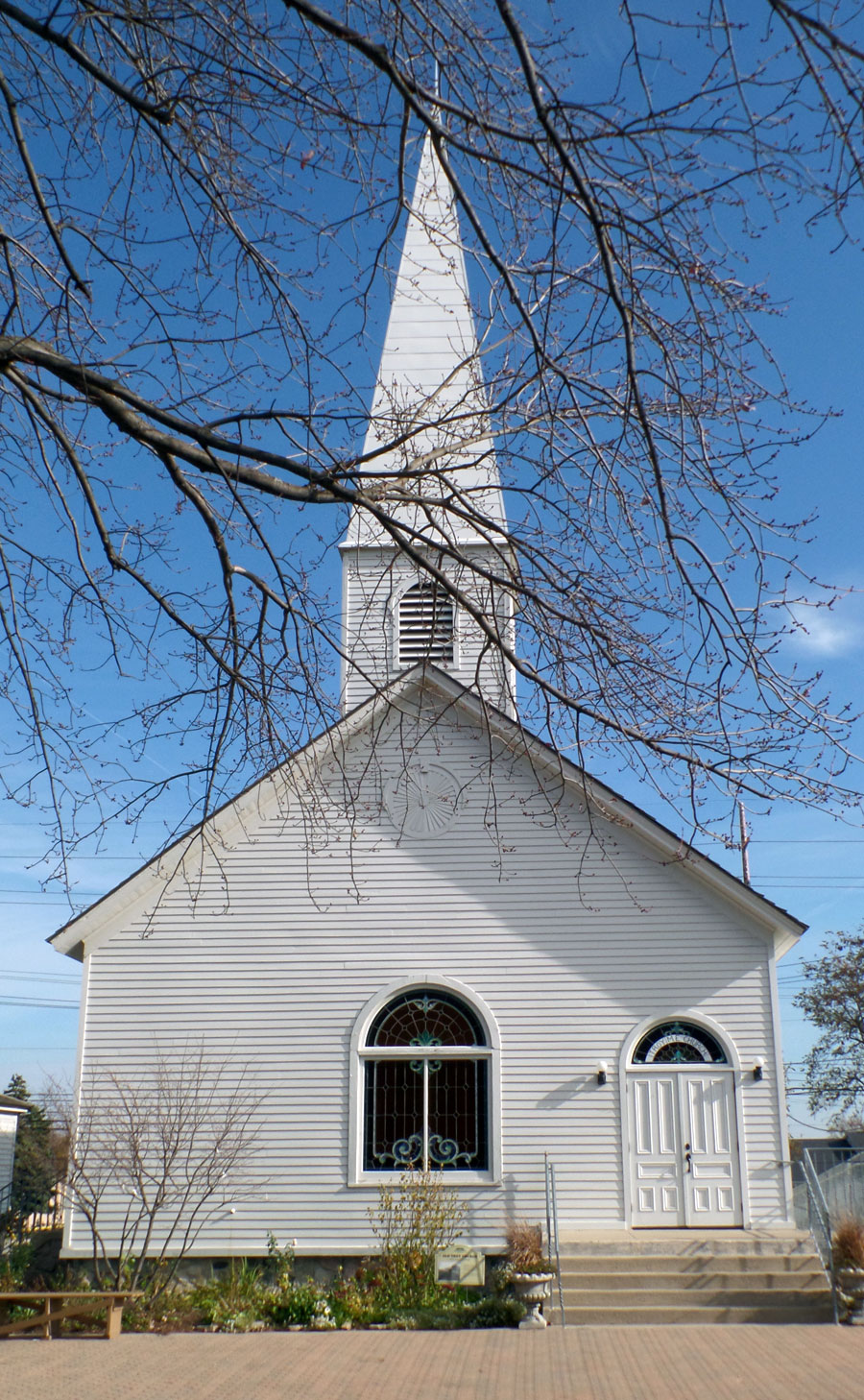
In 1827, a handful of pioneers attended classes and services led by Elder Warren, a travelling Episcopal minister. They met in homes or a log schoolhouse. On November 9, 1836 Johnston Niles, the first landowner at Troy Corners, deeded property for an Episcopal church for $1, with the stipulation that “in case of failure… of said corporation it was to be conveyed to the nearest duly organized Protestant Episcopal Church.” One year late this simple, Georgian style church was built. Stained glass windows, some bearing the names of pioneers, were added after 1863. The arrangement of diagonal pews and a corner chancel is the original interior design. In 1868 the church was conveyed to the Methodists for $200 because many of the Episcopalians had moved away. The First United Methodist Church of Troy built a new church in 1963 and sold the old church and parsonage to antiques dealers. The Troy Historical Society purchased both buildings in 1997. They were relocated to the Village in 2003 and restored to their 1910 appearance.
The church was built in 1837 by a small group of Episcopalians. It was conveyed to a Methodist Congregation in 1868 and remained their house of worship until 1968 when they built a larger modern church. The ladies of the church oversaw the construction of the parsonage around 1880. Over the years 26 different ministers and their families lived in the house. Between 1968 and 1997 the buildings were owned by an antique dealer.
The Troy Historical Society and the City of Troy purchased the church and parsonage in 1997. However the buildings were not moved to the Village until August 20, 2003.
The Church was restored to its 1910 appearance, with the original entry, steeple, and historic arrangement of pews and chancel. The Parsonage restorations reflect the same era. Both buildings were restored in ten months were opened to the public on June 27, 2004.









